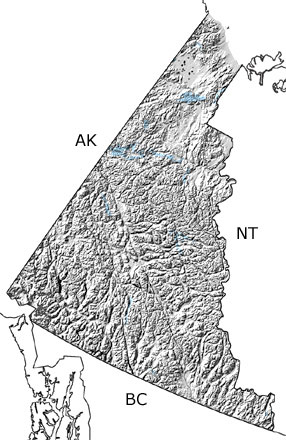Paleontology and geologyThrough the Permian, Yukon Territory was covered by shallow to deep seas of the continental shelf and slope. In the beginning of the period, these seas dropped down into a growing ocean basin that separated exposed land to the east and several volcanic islands out west. Subduction along these islands brought magma up to the surface, forming volcanoes and blocks of granite. But in the Middle Permian, this subduction zone changed and began to close the ocean basin between the islands and the continent. By the end of the period, the islands reached the continental slope in the southwestern part of the territory. Sediments eroding off the islands and the mainland to the east began to fill the shallow seas that covered the territory. The limestones, sandstones, and shales deposited during this period contain fossils of brachiopods, corals, foraminifera, bivalves, hydrozoans, ammonoids, and nautiloids. These fossils record the distance of the deposits from the continent: older rocks contain some fossils that are more similar to those of Japan and China, while younger rocks and fossils are more like those of western North America. In addition, pollen and spore fossils from these rocks indicate that various conifers, seed ferns, cycads, and gnetophytes covered the islands and mainland. |




